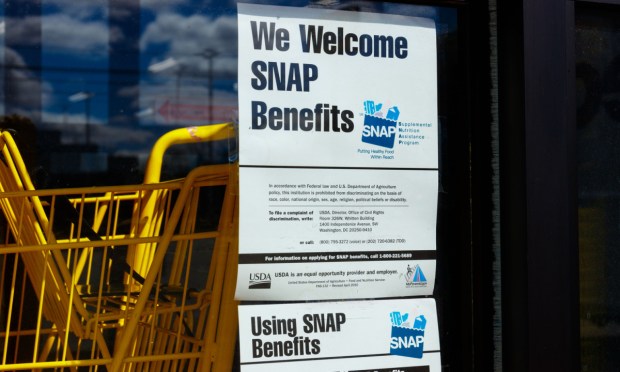
Amazon, for its part, has been expanding its acceptance of SNAP EBT across its digital channels as well as its brick-and-mortar stores for the past several years, under the Amazon Access banner.
“We know that there are many different areas across the country where people don’t have access to a supermarket or are encountering transportation issues,” Nancy Dalton, head of marketing and community partnerships, Amazon Consumables, told Chain Store Age in an interview posted Tuesday (Dec. 19). “Our grocery services and nationwide SNAP EBT payment acceptance can really make a difference in closing those gaps.”
Meanwhile, Wakefern subsidiary ShopRite is tapping grant funds to reach low-income eCommerce consumers. On Tuesday, the New Jersey Economic Development Authority (NJEDA) announced that it was giving its first Food Retail Innovation in Delivery Grant (FRIDG) to the Brookdale ShopRite, which will install temperature-controlled lockers for Food Desert Community (FDC) residents, fulfilling online grocery orders including those made with SNAP benefits.
“We’re excited about the opportunity to expand grocery delivery options to the Newark’s South Ward by participating in the FRIDG program, and look forward to deepening our connections with the residents of the vibrant city of Newark,” Neil Greenstein, owner of Brookdale ShopRite Inc., said in a statement.
Similarly, Kroger, the United States’ leading pure-play grocer, announced back in October that it was expanding EBT payment acceptance for digital Pickup and Delivery orders across its portfolio of stores, and Walmart, the world’s top grocery retailer, shared back in July that it is now offering half-priced memberships for its Walmart+ delivery subscription to those receiving government aid.
These moves come as grocers look to drive eGrocery adoption among lower-income consumers. PYMNTS Intelligence’s study last year, the “ConnectedEconomy™ Monthly Report: The Gender Divide Edition,” which drew from a survey of more than 2,600 U.S. consumers, revealed that 58% of men and 43% of women with annual incomes exceeding $100,000 reported that they had order groceries online for home delivery, while only 28% of men and 26% of women whose incomes were lower than $50,000 said the same.
These disparities hold true for use of same-day grocery aggregators such as Instacart as well, with 55% of high-earning men and 35% of women utilizing the option, versus just 27% of low-income males and 20% of lower-income females.
Yet there is certainly demand for accessible eGrocery options among low-income consumers, given the time savings, which can be vital when consumers work multiple jobs or have other needs for increased accessibility.
Ofek Lavian, CEO and co-founder of third-party payment processor Forage, spoke to this demand in an interview with PYMNTS’ Karen Webster last year.
“Instacart’s traditional consumer base is suburban, affluent, middle-aged,” Lavian said. “But what we realize is that there’s actually really strong product market fit, particularly for [SNAP recipients], because one in every four SNAP recipients is actually on some form of disability. Many of them geographically live in food deserts, [and] many of them are 1099 workers, meaning [that] every hour they’re out grocery shopping might be an hour they’re not providing for their families.”